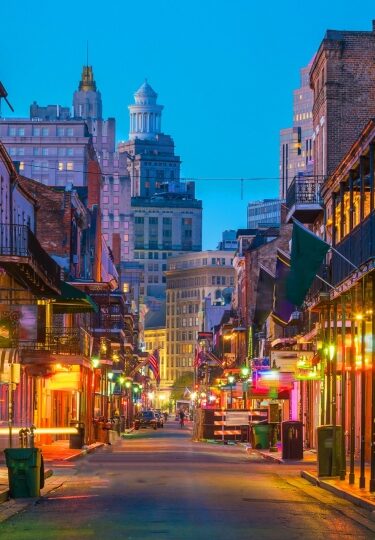When you ask, “What is New Orleans known for,” the list you’ll get is as rich as the culture of the Mississippi River itself. New Orleans, a coastal riverside city in Louisiana, is full of life and history—and also happens to be the birthplace of jazz, where music surrounds you everywhere.
Another thing this town is known for is its lavish Mardi Gras parades and costumed merrymakers. Everything about New Orleans, from the old French Quarter to the local swamps, is infused with Southern charm.
New Orleans is also a foodie’s delight, with Creole and Cajun cuisine influenced by French, African, and Caribbean traditions. From jambalaya to beignets, you’ll never go hungry in the Big Easy, a sultry city brimming with culture and character.
Mardi Gras & Other Festivals
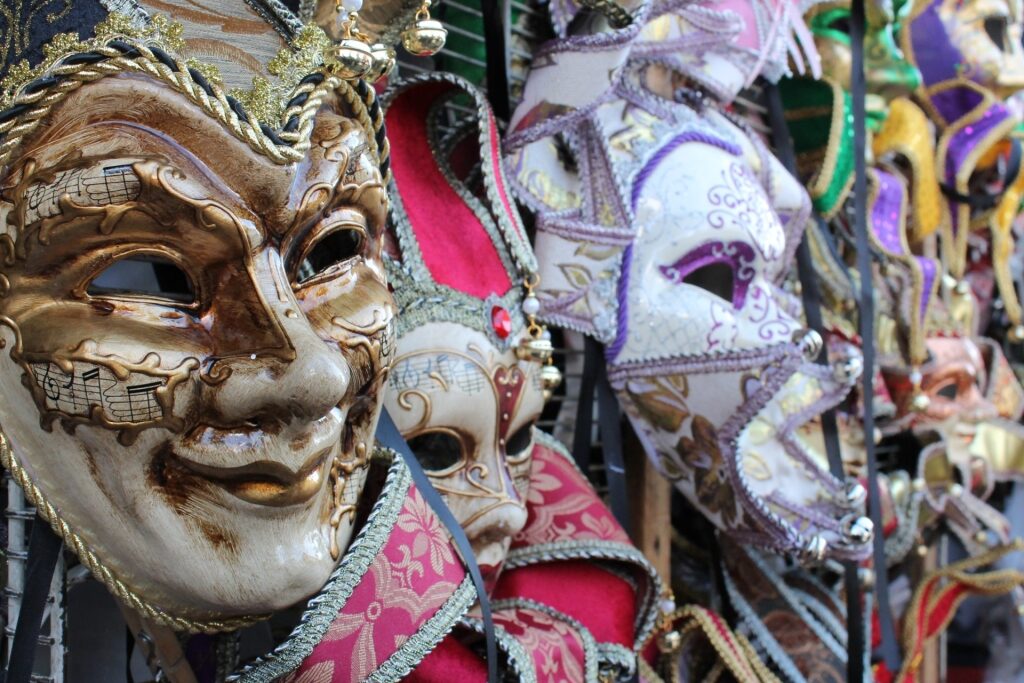
Mardi Gras
Mardi Gras, which means “fat Tuesday” in French, is the star of the New Orleans festival scene, drawing crowds from around the world. This must-see festival, which originates in the feasts and bacchanalian times before Lent, covers the streets with floats, colorful costumes, and parades.
If you’re in town during Mardi Gras, which, depending on the year, usually falls in February or March, you’ll be treated to a spectacular party full of music and revelry.
Mardi Gras, a French and Spanish Catholic holiday, dates back centuries, although in recent times, has transformed into something unique to New Orleans, where you can collect colorful beads on the streets, wear fancy handmade costumes, and watch the processions go by.
New Orleans has other notable celebrations, too, from the outdoor Jazz and Heritage Festival held in spring to the French Market’s Creole Tomato Festival, held in June, which is full of music and delicious food.
The French Quarter & Bourbon Street
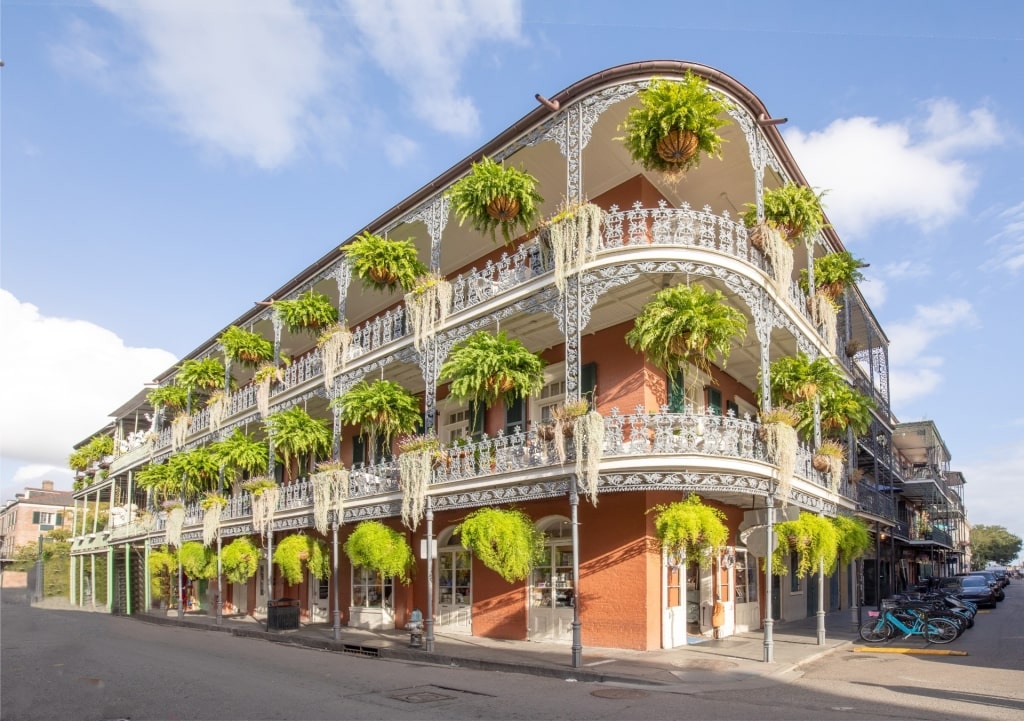
French Quarter
You’ll likely hear people say that New Orleans’ heartbeat is the French Quarter, where you can delight in wonderful architecture and well-established party culture in the oldest part of the city, the Vieux Carré, featuring 18th-century buildings with French and Spanish design influences.
During the day, before the party crowd comes out, you can enjoy the pretty lanes of the French Quarter, with picturesque courtyards, quaint antique shops, and tasty things to eat. This is where many of the city’s stories about pirates, voodoo, and jazz legends are set.
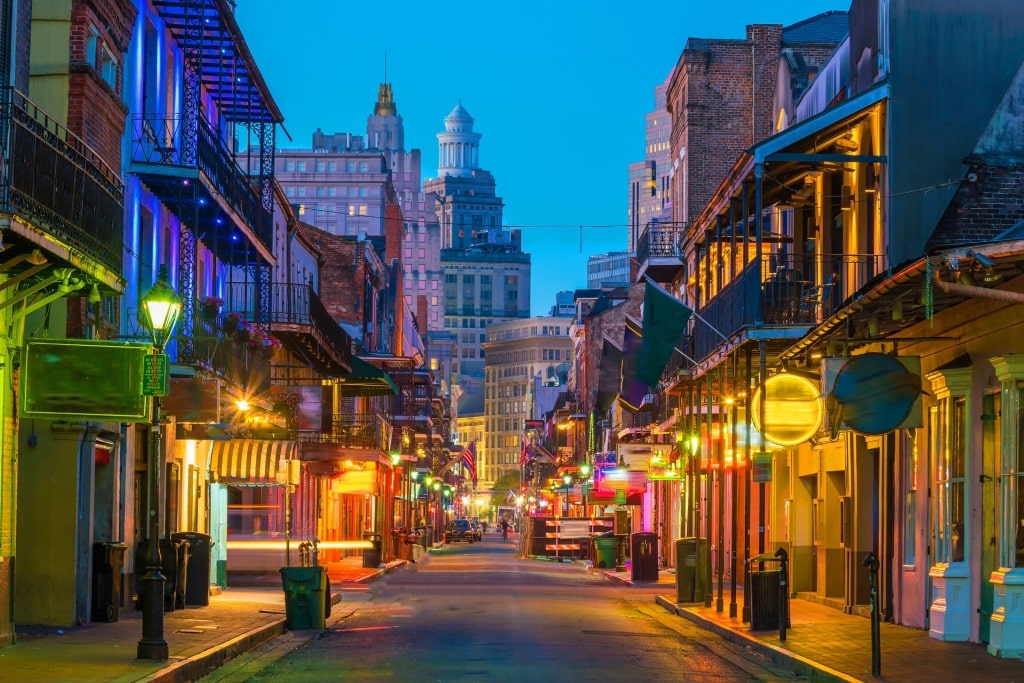
Bourbon Street
The neon-lit Bourbon Street in the French Quarter, with its bars, clubs, and wild revelers, is the place to go if you want to have a good time. These 12 ultra-cool city blocks come with fun, jampacked balconies overlooking the action and a vibrant street culture that’s busy with people.
Music Scene & Jazz Traditions
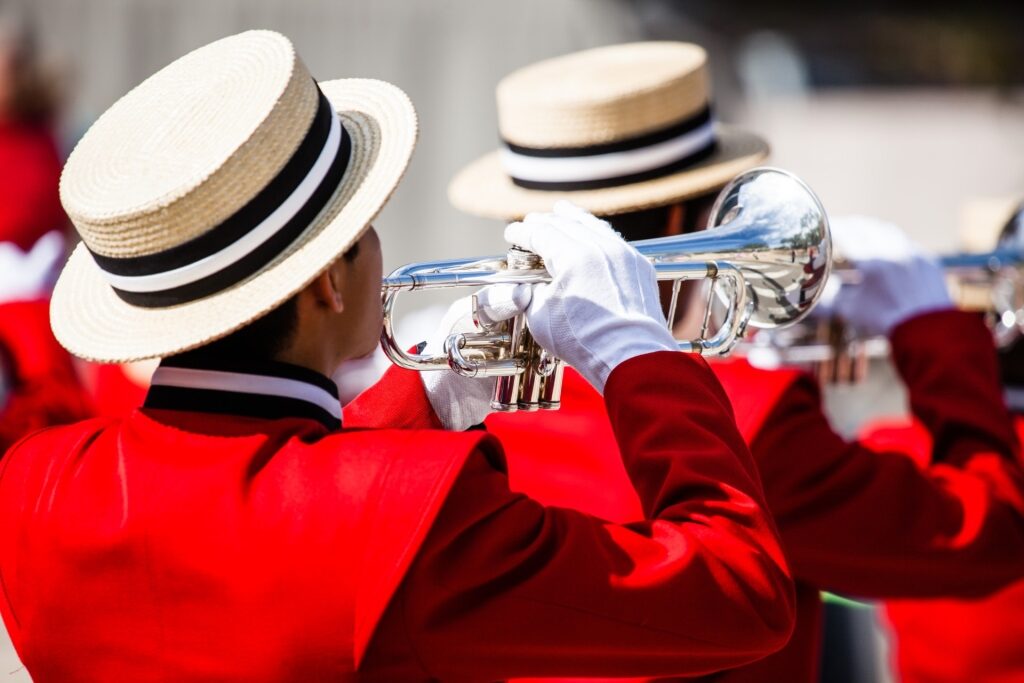
Brass band
What is New Orleans known for? It’s known as the birthplace of jazz, which means this city has plenty of offerings for jazz aficionados, with soulful tunes sweeping through the air, creating an unparalleled music scene.
The streets are chock-full of infectious beats, from brass bands in Jackson Square to legendary music venues like Preservation Hall and Tipitina’s, where you can find jazz, blues, funk, and more local brass bands.
Music is not a hobby here—it’s a part of New Orleans’ DNA, an art form pioneered by celebrated artists such as Louis Armstrong, Ellis Marsalis, Louis Prima, and others. Head to venues like Snug Harbor or the Spotted Cat to listen to talented musicians showcase their skills.
Music festivals, like the aforementioned Jazz and Heritage Festival, help celebrate the city’s melodious legacy, with performers and audience members flocking to the city to hear what makes New Orleans one of the most iconic live music destinations on the planet.
Exciting Cuisine
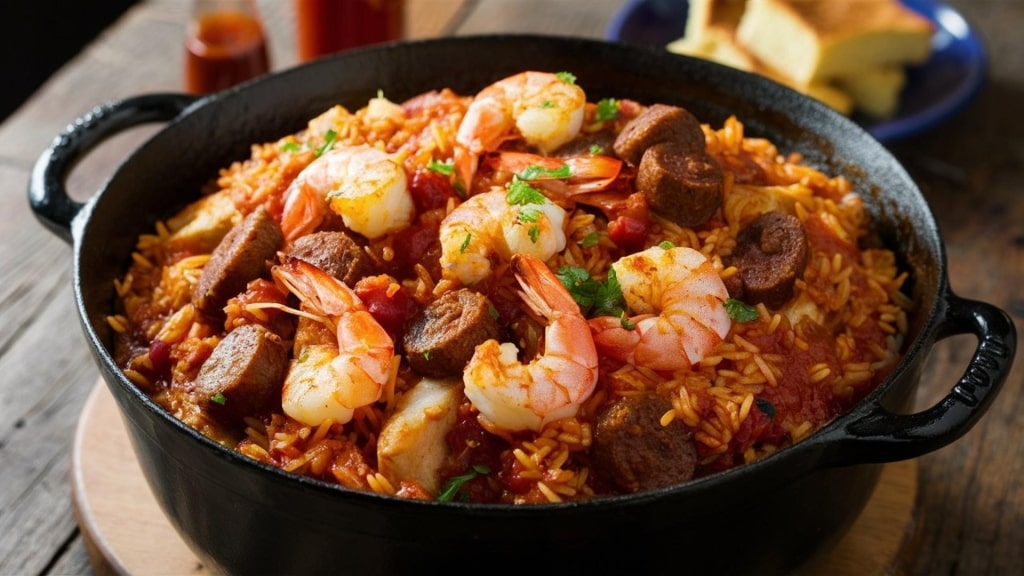
Jambalaya
New Orleans is known as one of the best cities to travel for food, noted for its delicious spreads of French, African, and Caribbean-infused flavors. It’s not a complete trip to this city without trying some Cajun and Creole cuisine, from jambalaya, a spiced mixed rice dish, and gumbo to crawfish étouffée.
Restaurants such as Cochon or Commander’s Palace serve amazing Cajun food, letting you taste authentic Creole-style cooking. Creole is considered “city food,” while Cajun is “country food.” Cajun is usually the spicier of the two.
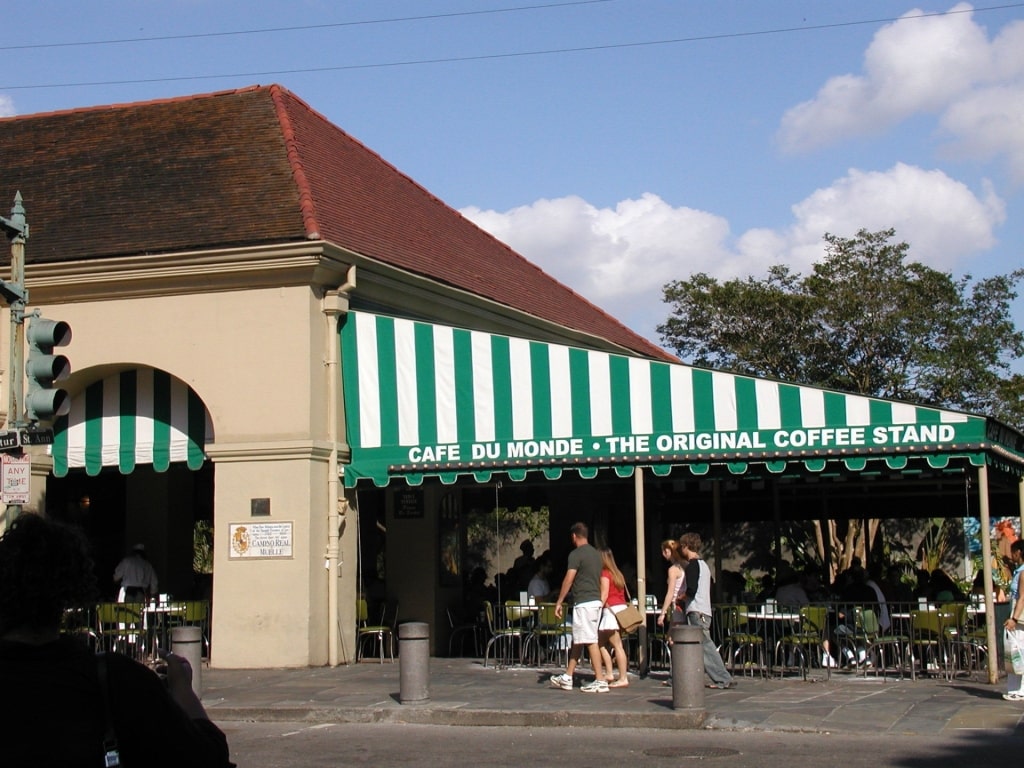
Café du Monde
If you’re after something sweet, you can’t go wrong with a plate of beignets at Café du Monde in the French Market; these warm, sugary pastries are a New Orleans institution.
Whether you’re into crawfish and seafood boils or spicy boudin, a seasoned pork and rice sausage, New Orleans is a delight for anyone interested in Cajun and Creole cuisine.
Saint Louis Cathedral
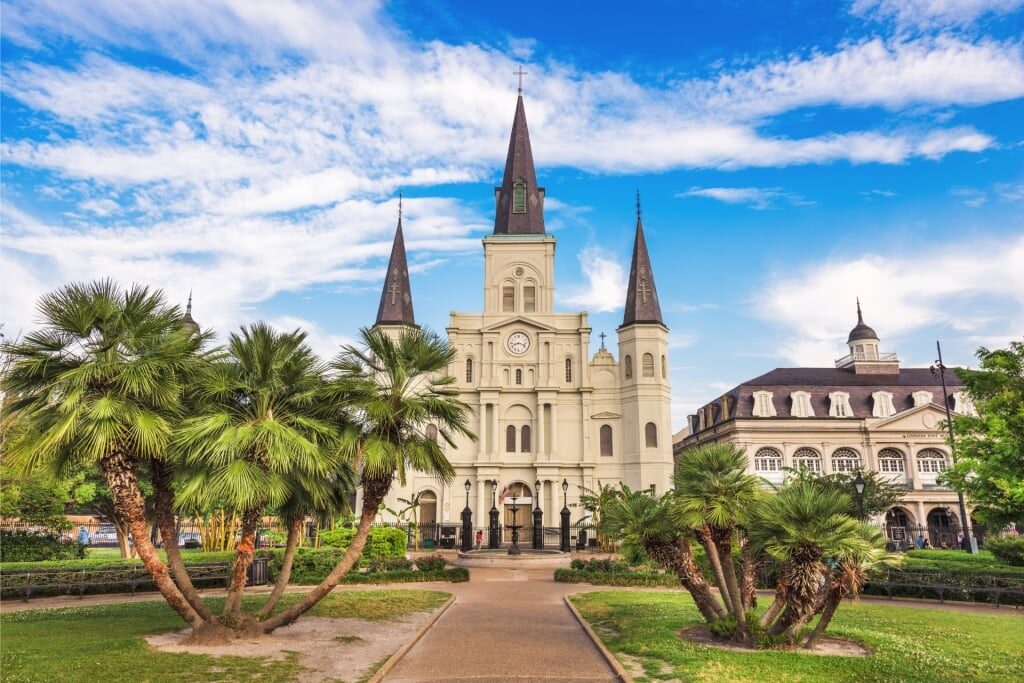
Saint Louis Cathedral
Overlooking Jackson Square, you’ll spot St. Louis Cathedral, one of the city’s most beautiful and historic buildings.
This cathedral, founded in the late 18th century, is one of the oldest Roman Catholic cathedrals in the United States. Its distinctive triple steeples and the magnificent Gothic French façade capture the city’s French-inspired architectural heritage.
Inside, the cathedral’s grand, German-made stained-glass windows and high Rococo altar create a peaceful oasis for some quiet contemplation away from the French Quarter crowds outside.
St. Louis Cathedral has survived fires, floods, and hurricanes, making it a testament to the city’s endurance and spirit. If you visit, you can engage with some of the religious history that helped make New Orleans what it is today.
Pontalba Buildings
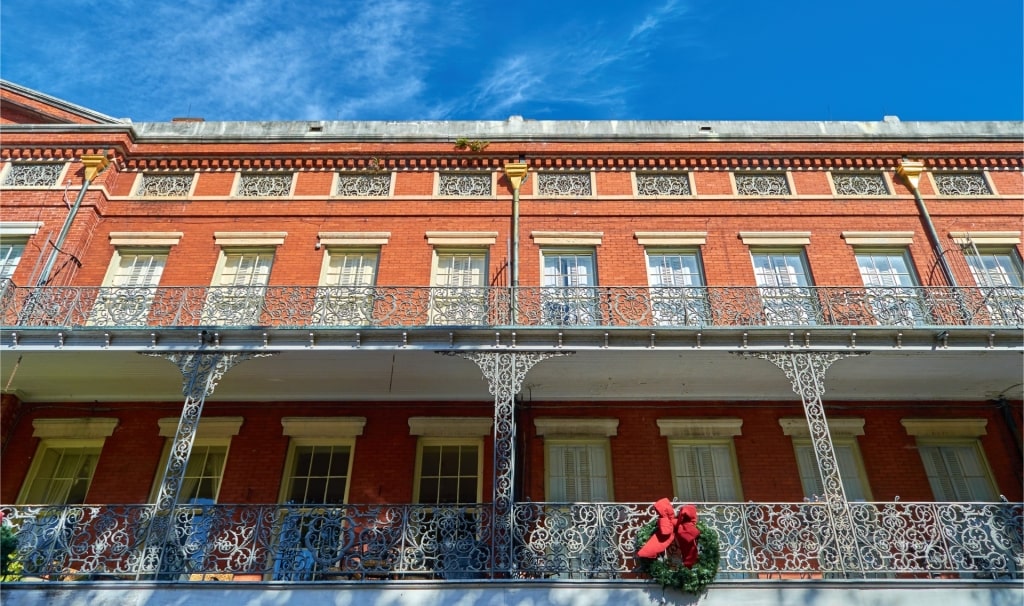
Pontalba Buildings
Located on the corner of Jackson Square, the palatial Pontalba Buildings, dating back to the early 1850s, are some of New Orleans’ oldest residential complexes. These red-brick structures are instantly recognizable by their wrought-iron balconies and traditional layout.
The buildings, built by Baroness Micaela Almonester Pontalba, are now home to shops, cafés, and apartments. Their grand façades and lacy wrought iron balconies overlook Jackson Square, where street artists display their works on an iron fence daily.
These architectural masterpieces, which have so much history, will show you some of the beauty of New Orleans’ architectural legacy.
Esplanade Avenue
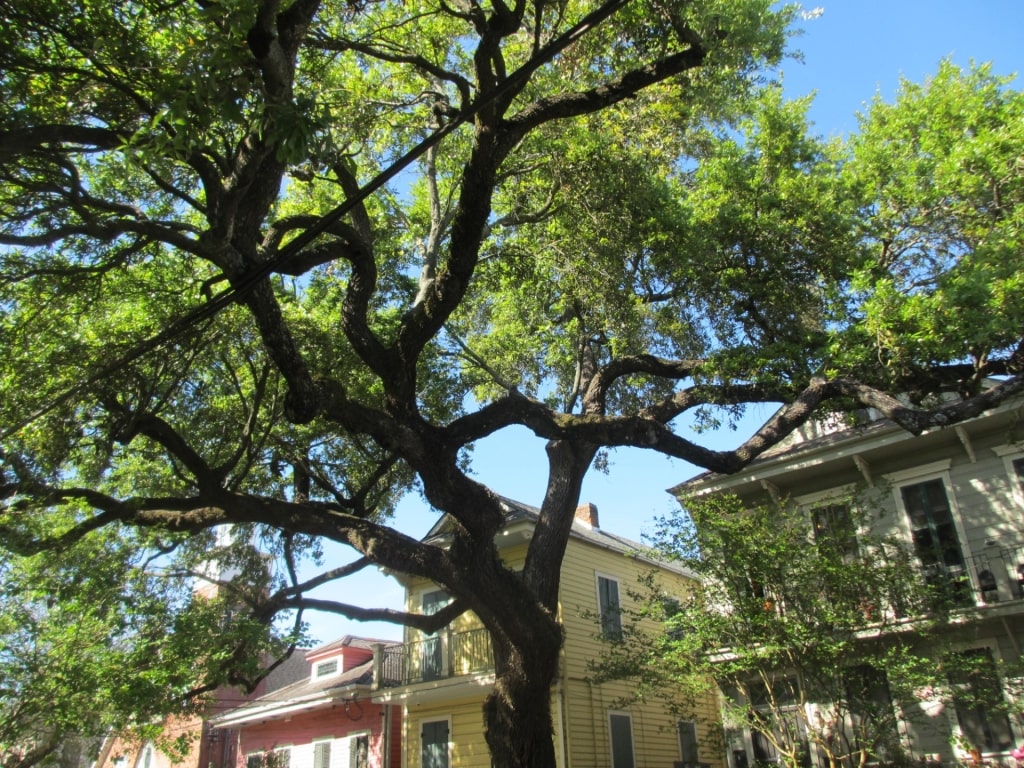
Esplanade Avenue
Esplanade Avenue is a sublime street lined with Creole mansions painted in rich hues and sheltered by live oaks. It’s a scenic three-mile road that leads from the Mississippi River to City Park, which will let you absorb some of New Orleans’ 19th-century high society history.
The avenue was originally laid out as a thoroughfare, although eventually it became a chic hangout for rich Creole families, with some of their stately homes still around today, complete with wrought-iron balconies and pretty gardens.
If you walk down certain parts of the avenue, you will be transported back in time, surrounded by French, Spanish, and Caribbean building influences.
Esplanade is great for a stroll or a bicycle ride, providing you with a glimpse of another side of New Orleans’ character.
Louisiana Swamp Tours
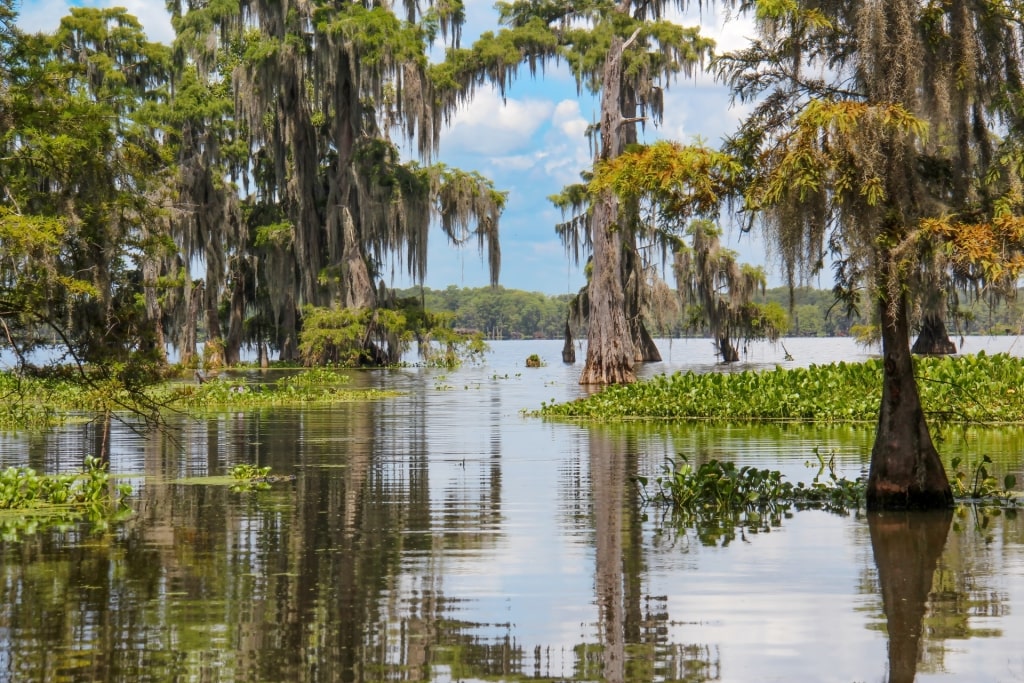
Louisiana swamp
What is New Orleans known for? Well, due to its low-lying position, it’s famous for dense swampland nearby. A guided swamp tour will teach you more about how Mother Nature helped shape this city’s fate.
If you venture into the swamps on a flat-bottomed boat, you’ll witness the uncanny beauty and mystery of the state’s bayous.
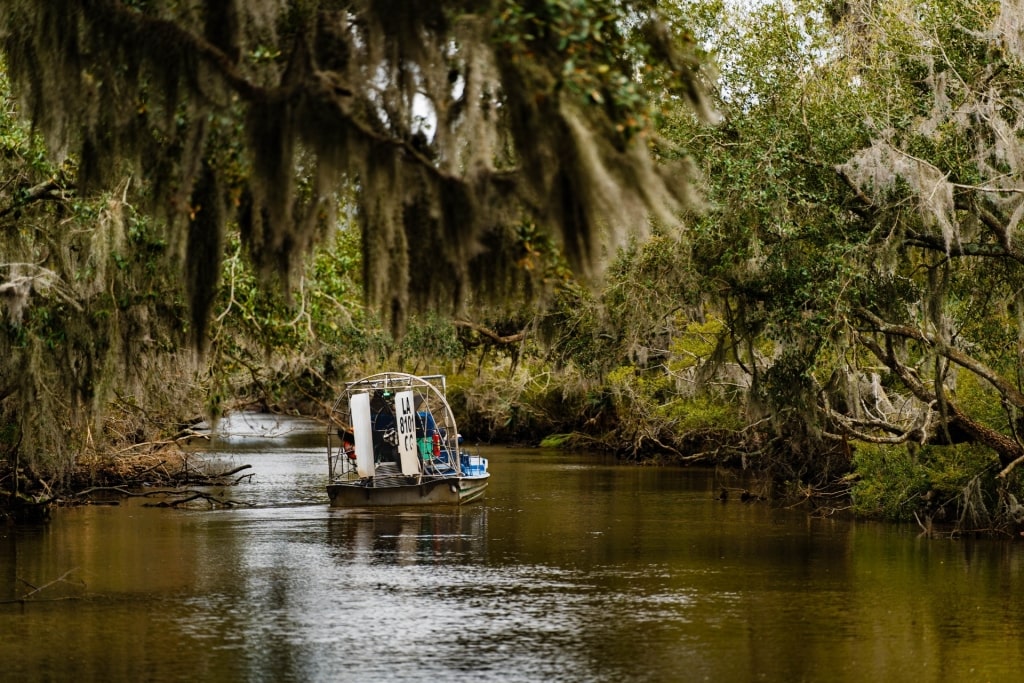
Louisiana swamp
Cut through the water past cypress trees covered in Spanish moss and look for alligators, herons, and turtles weaving their way through this remarkable water-infused ecosystem.
Excursions are typically accompanied by a knowledgeable guide who will impart riveting stories about the swamp’s natural ecology and the bayou’s Cajun and Creole history.
Lush Parks
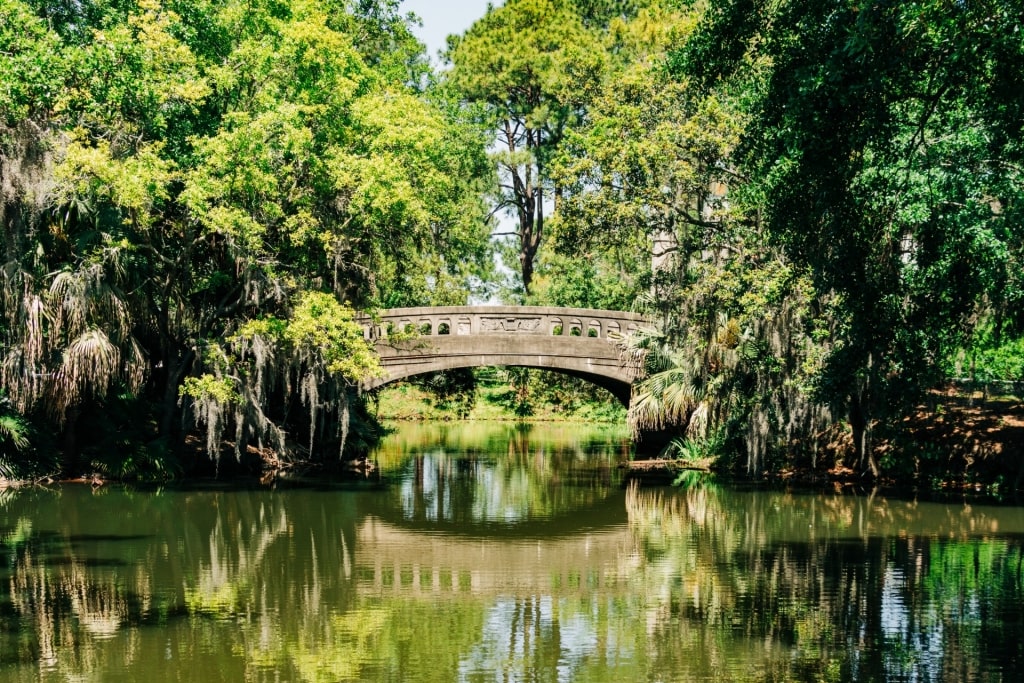
City Park
New Orleans’ many parks reflect the vibrancy of the city and are also great spots to unwind, explore, and enjoy art, history, and nature.
First off, the New Orleans Botanical Garden in City Park will offer you a delightful oasis filled with thousands of different exotic plants and flowers, inviting you to stroll along its tranquil paths and observe the season’s flowers.
City Park itself is a gigantic green space with everything from paddle boating in swan-shaped boats on Big Lake to acres of inspired outdoor art at the Sydney and Walda Besthoff Sculpture Garden.
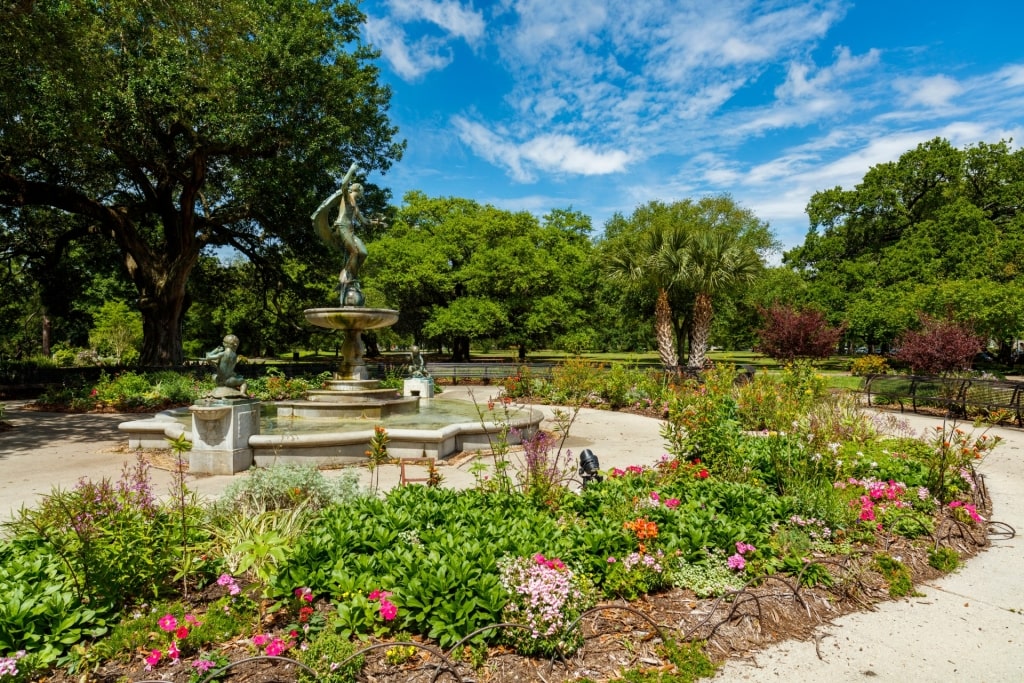
Audubon Park
You’ll find peaceful trails meandering through centuries-old oaks and plenty of picnic areas in the Uptown neighborhood’s Audubon Park, along with different exotic animals at the Audubon Zoo.
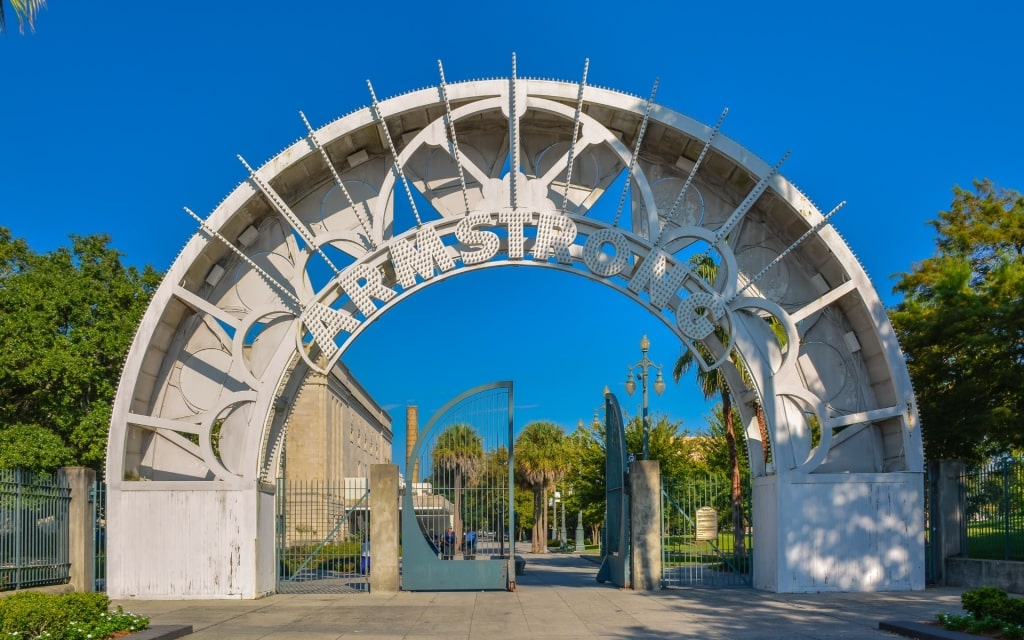
Louis Armstrong Park
Just outside the French Quarter, you’ll come across Louis Armstrong Park, an oasis with jazz and voodoo legends baked into its soul, plus some lovely gardens and ponds.
Congo Square is also a part of Louis Armstrong Park. This is where enslaved people used to gather to sing, dance, express their culture, and socialize. Spend some time in one or more of New Orleans’ parks and you’ll quickly get a better sense of the city.
Read: Best Things to Do in New Orleans With Kids
Museums
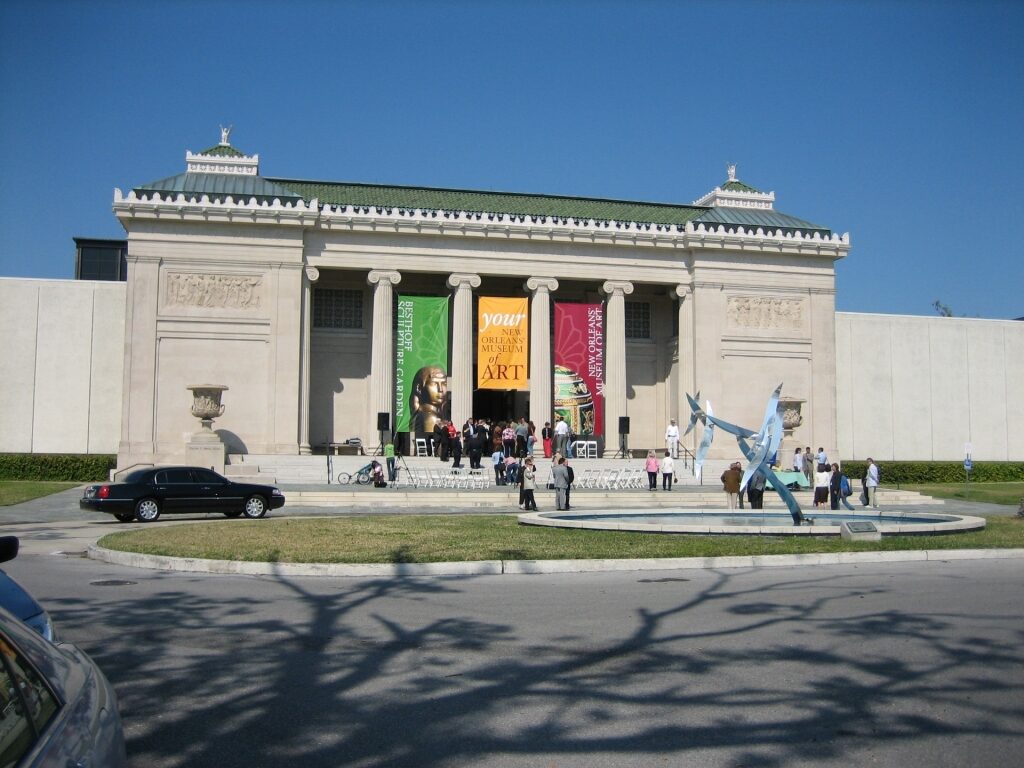
New Orleans Museum of Art Photo by Infrogmation of New Orleans on Wikimedia Commons, licensed under CC BY 2.0
The New Orleans Museum of Art, NOMA, is an absolute must, located in City Park, featuring a fine arts collection stretching back hundreds of years. You’ll find paintings by famous European and American artists along with other works from artists from around the world.
If the Second World War intrigues you, make your way to the National WWII Museum, which will transport you back to the life-and-death struggles of this global conflict through interactive displays, memorabilia, and even an interactive 4D cinema.
For something a little less heavy, historically speaking, swing by the Backstreet Cultural Museum in the Tremé district, which highlights local African American culture, from jazz funerals and second-line brass band processions to intricate Mardi Gras Indian costumes.
Natchez Steamboat Cruises

Port of New Orleans
A Natchez steamboat trip along the Mississippi River is the ultimate New Orleans excursion.
The regal-looking Natchez is a sternwheeler that will take you back to an era when steamboats ruled the Mississippi.
Glide down the river for a two-hour jazz cruise, and you’ll see the New Orleans skyline and the busy Port of New Orleans as you enjoy live jazz plucked straight out of the city’s musical heritage. You can also enjoy some Cajun or Creole cuisine on board.
Friendly guides will give you some background information about the river and how it shaped the city and played such a pivotal role in American history.
The French Market
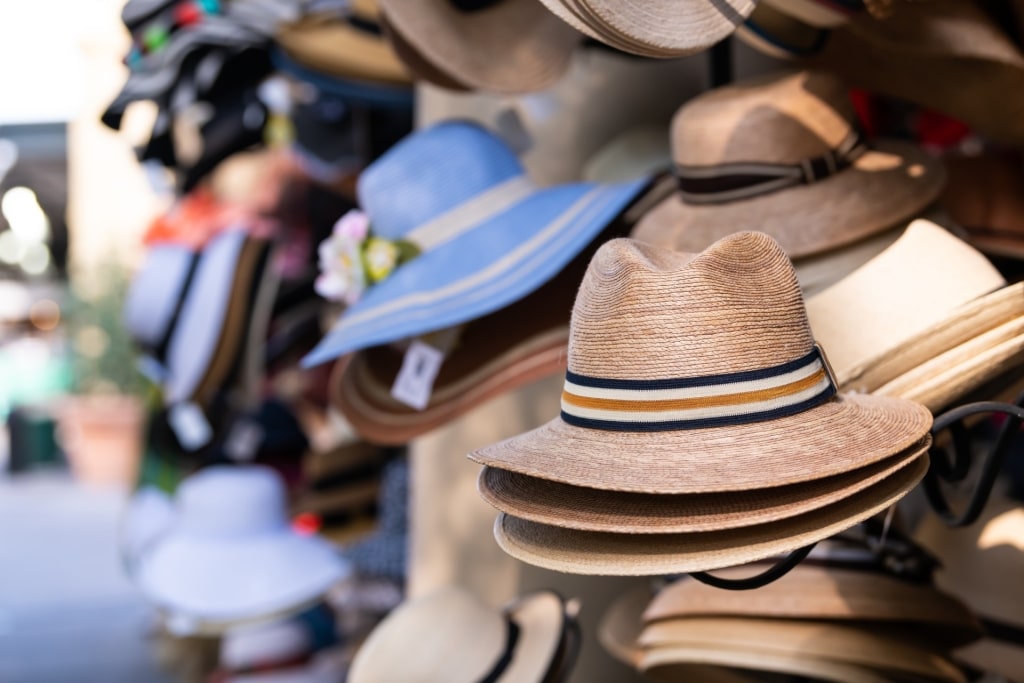
Hats
The French Market is an outdoor showcase of food, shopping, and live music and has been a gathering place in the French Quarter since the late 18th century.
These days, this dynamic, open-air venue features a shopping center with all types of handmade goods and antiques, local products and produce, and plenty of delectable cuisine.
As you pursue various vendors and stalls, you can pick up tasty New Orleans fare like beignets, gumbo, and po’boys.
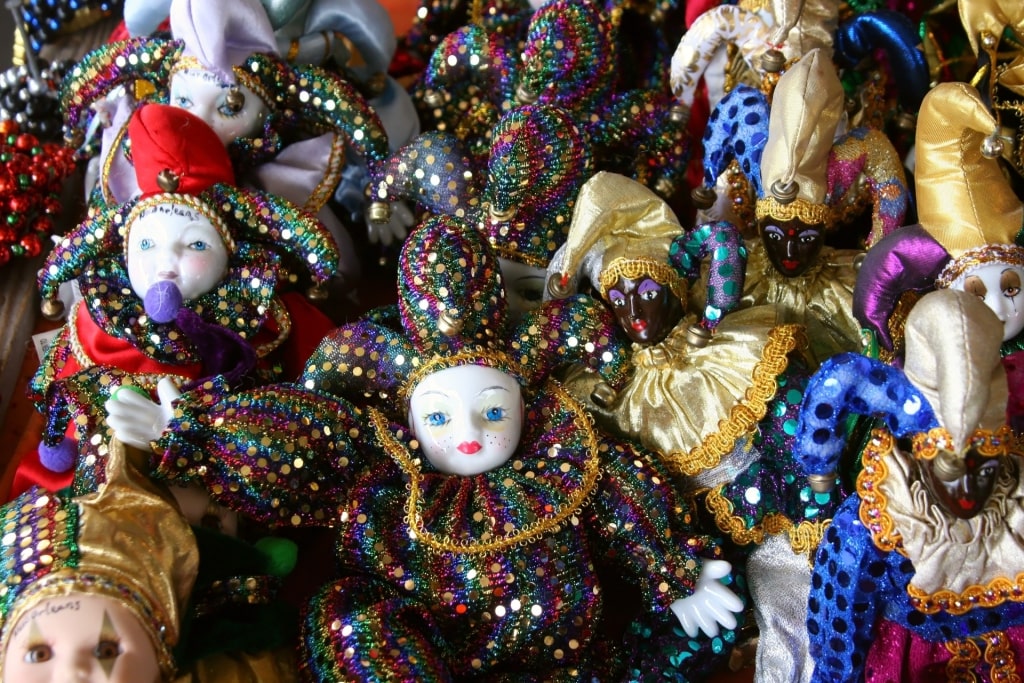
Dolls
Also, check out the Craft Bazaar, Flea Market, and Shops of the Colonnade for fun souvenirs, knickknacks, and other handmade goods to commemorate your visit.
There’s often live jazz at the French Market, so there’ll likely be some sweet tunes accompanying you as you look around.
Oak Alley Plantation
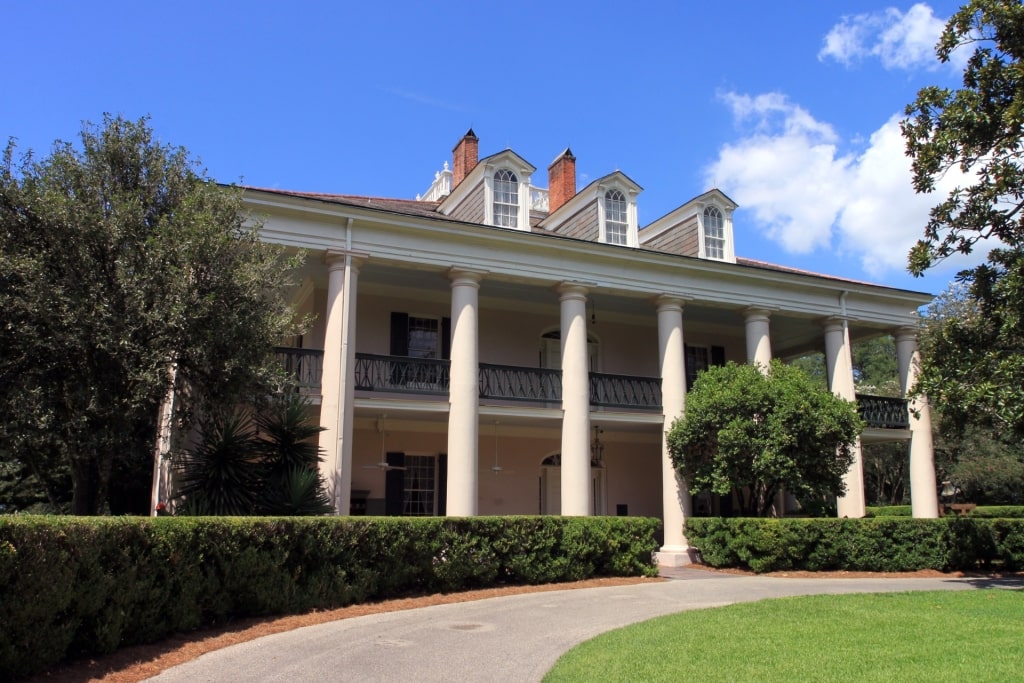
Oak Alley Plantation
Oak Alley Plantation, about an hour west of New Orleans, will offer you some insight into Louisiana’s antebellum past, before the Civil War. The estate, with its old mansion and gorgeous avenue of 300-year-old oak trees, was a sugar plantation in its former life.
As you appreciate the beauty of the Greek Revival mansion, you can also try to imagine what life must have been like for planters and the enslaved who lived and worked there.
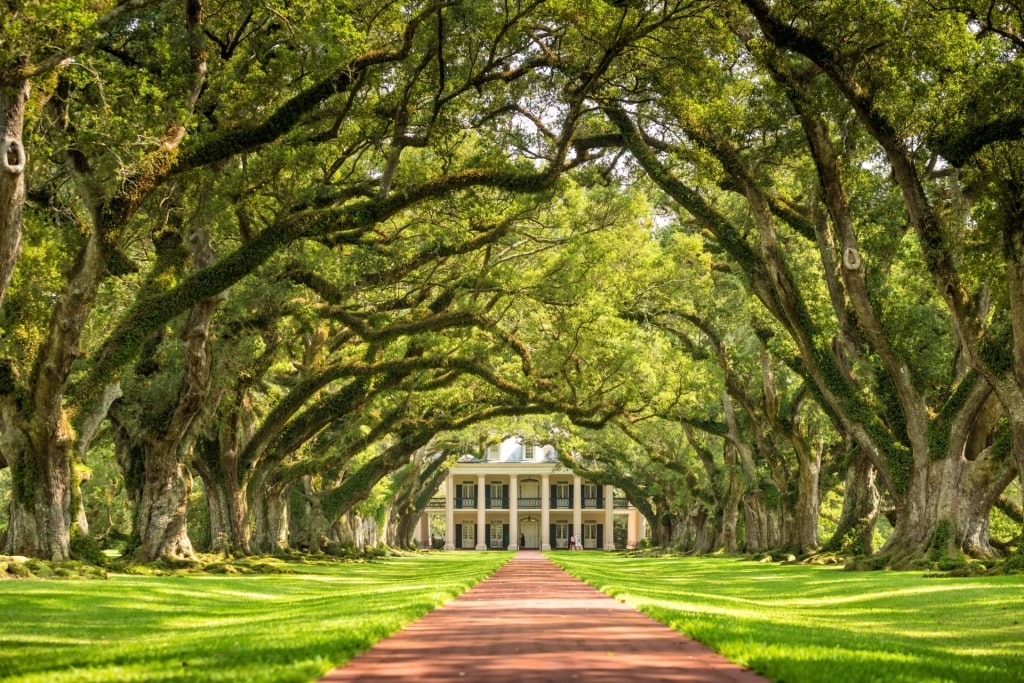
Oak Alley Plantation
The plantation, next to the Mississippi, offers organized tours with well-informed guides who will tell you about the “big house,” or the mansion, and the poignant history of the area.
Oak Alley has a museum, galleries, lovely gardens, a smithy, and other exhibits that all help make this site a mesmerizing historical destination.

New Orleans
Ready to explore the Big Easy? Browse Celebrity’s cruises to New Orleans and discover this captivating city for yourself.
